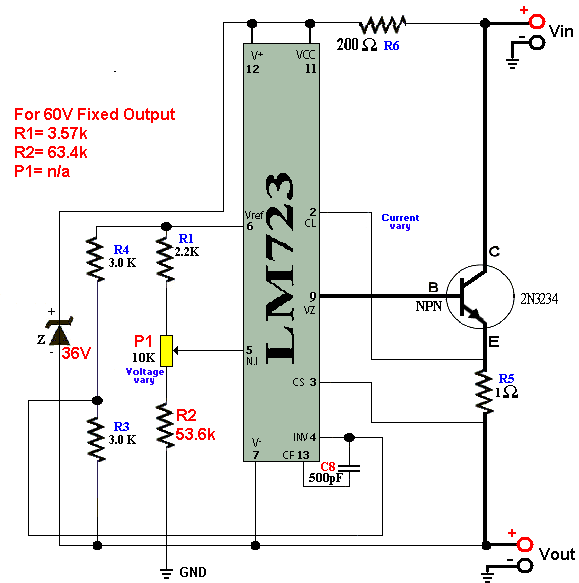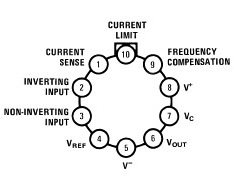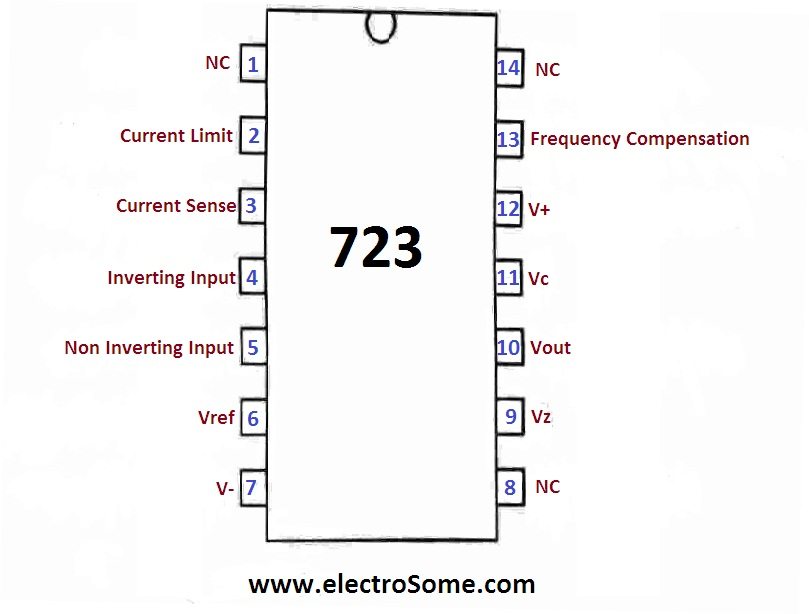ChatGPT
The 723 voltage regulator is commonly used for series voltage regulator applications. It can be used as both positive and negative voltage regulator. It has an ability to provide up to 150 mA of current to the load, but this can be increased more than 10A by using power transistors. It also comes with comparatively low standby current drain, and provision is made for either linear or fold-back current limiting. LM723 IC can also be used as a temperature controller, current regulator or shunt regulator and it is available in both Dual-In-Line and Metal Can packages.The input voltage ranges from 9.5 to 40V and it can regulate voltage from 2V to 37V.

Features of 723 Voltage Regulator
- 150 mA output current without external pass transistor
- Output currents in excess of 10A possible by adding external transistors
- Input voltage 40V max
- Output voltage adjustable from 2V to 37V
- Can be used as either a linear or a switching regulator
Internal Block Diagram
The internal working can be explained by dividing it into two blocks, the reference voltage generatorand the error amplifier. In the reference voltage generator, a zener diode is being compelled to operate at fixed point (so that zener output voltage is a fixed voltage) by a constant current Source which comes along with an amplifier to generate a constant voltage of 7.15V at the Vref pin of the IC.
As for the error amplifier section,it consists of an error amplifier, a series pass transistor Q1 and a current limiting transistor. The error amplifier can be used to compare the output voltage applied at Inverting input terminal through a feedback to the reference voltage Vref applied at the Non-Inverting input terminal.These connections are not provided internally and so has to be externally provided in accordance with the required output voltage.
The conduction of the transistor Q1 is controlled by the error signal. It is this transistor that controls the output voltage
Pin Out 723 Voltage Regulator
V and V-
These are the supply voltage terminals of the IC. V is the positive terminal and V- is the negative terminal. The voltage difference between these terminals should be between 9.5V to 40V.
Non Inverting Input
This is the non inverting input of the error amplifier whose output is connected to the series pass transistor. We usually give reference voltage or a portion of it to the non inverting input.
Inverting Input
This is the inverting input of the error amplifier whose output is connected to the series pass transistor. We usually give output voltage or a portion of it to the inverting input. This makes the output voltage constant.
Vref
It is the reference voltage output of the IC. It is the output of voltage reference amplifier. Its output voltage is about 7.15V.
Vout
It is the output terminal of the IC. Usually output voltage ranges from 2 to 37V. This pin can provide up to 150mA current.
Current Limit
It is the base input of the current limiter transistor. This pin is used for current limiting or current fold back applications.
Current Sense
This is the emitter of current limiting transistor. This terminal is used with current limiting and current fold-back applications.
Vc
This is the collector input of the series pass transistor. It is usually directly connected to the positive supply voltage if an external transistor is not used.
Freq. Comp
Frequency Compensation : This pin is used to connect a capacitor which bypasses high frequency noises. It is the output of error amplifier. The capacitor is connected between this pin and inverting input of the error amplifier. The prescribed value of this capacitor varies for different types of regulators. Please refer the datasheet for that.
Product Of The Year:





